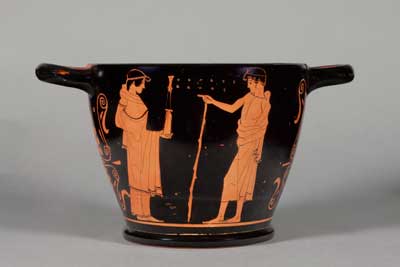Clay tokens of different shapes have been found at many Middle-Eastern sites from as early as 8000 BC. These tokens may have been used for counting when the amount of information needed for trade exceeded the average human memory. Similarly the Inca empire of South America stored information using quipu, which were groups of strings of different colours, knotted at intervals to record census statistics and taxes.
Eventually, symbols developed that were used to represent words or ideas, rather than numbers. The earliest writing was probably pictographic, using drawings of real things to convey meanings, such as are seen in Ice Age cave paintings. We still use many pictograms today – just look at the signs on the doors of any public toilets.
The idea of assigning a phonetic (sound) value to a symbol was a radical step forward in the development of writing. The earliest writing identified is cuneiform script, which dates to around 3300 BC and was probably invented by the Sumerians, in the area that is now known as southern Iraq. Other scripts were later created in Egypt (3100 BC), the Indus Valley (2500 BC), Crete (1900 BC), China (1200 BC), and in Central America (600 BC).



